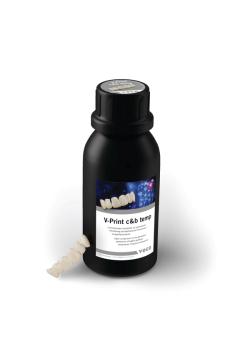- About Us
- Advertise
- Editorial
- Contact Us
- Terms and Conditions
- Privacy Policy
- Do Not Sell My Personal Information
© 2025 MJH Life Sciences™ and Dental Products Report. All rights reserved.
The top 5 dental lab trends of 2015
Ryan Hamm, editor of Dental Lab Products, counts down the top 5 trends that affected the dental laboratory world in 2015.
2015 may have come and gone without the Cubs winning the World Series, the hoverboard being on shelves everywhere or Marty McFly appearing from 1985, but it certainly came with its fair share of change! The dental laboratory world was no exception; changes came fast and furious, particularly because it was a year when the International Dental Show occurred and previewed some of the most cutting-edge solutions coming to the dental lab world.
With the year behind us, it’s time to take a look back at some of the trends that impacted dental laboratories this year and will continue to impact them into 2016 and beyond.
1. Dentures go digital
This year, it seemed like new dentureworkflows were everywhere. From fully digital outsourcing options to announcements of new workflows still to come to fruition and a myriad of new CAD options for denture production, the denture workflow has finally begun to evolve with new technology. While the full potential of digital tools on the denture workflow has yet to be realized, 2015 offered some tantalizing glimpses at some of the possibilities. Suddenly, full dentures produced entirely from digital files don’t seem like such a far away option.
2. Modules change CAD
2015 felt like the year that CAD modules started to really take off. We saw announcements for modules to create implants, partials, dentures and more, using the same software many labs already have with their scanner. These new options open up new revenues for labs and make design software even more versatile for a variety of indications. As these new modules become more user-friendly and tested, perhaps the silo-ing of certain tasks to certain tools will be a thing of the past.
3. 3D printing flirts with the future
This was the first year where it seemed like the thing 3D printer manufacturers have been hinting at, printing entirely finished dental prostheses and restorations with the push of a button, seemed to come closer to reality. New materials mimic the feel of gingiva, and we saw our first FDA-approved 3D-printable denture material. We’re also seeing new 3D printers that can layer different materials over one another. As more materials get approved and machines improve in effectiveness and efficiency, what seemed like sci-fi is quickly becoming the status quo.
4. Business struggles continue but evening out?
This year, the NADL released numbers showing the number of labs in the United States is decreasing. Additionally, salary numbers from the U.S. Bureau of Labor Statistics show wages for dental technicians are growing slowly even as the number of total labs continues to decrease. But there are also signs the trends may be evening out. Labs are contracting at a slower rate, and wages are rising, albeit slowly. 2016 will likely show how some of these numbers will bear out, but hopefully the worst of the numbers are behind us.
5. The line gets blurrier
As the digital workflow continues to change how labs and dentists work together, the line between the two has gotten even more subtle in the last 12 months. Dentists are bringing labs in-house, and lab technicians are being invited chairside to offer their expertise on tricky implant cases. Technology and materials innovations bring dramatic changes for both labs and dentists, which means it’s no longer possible for dental technicians to only pay attention to new lab products. They must educate themselves on new methods to receive, process and turn around cases. The new workflows present some exciting opportunities, and the next year will show how much is possible with these new technologies.
Top photo: Martin Barraud / Getty Images

 Download Issue: Dental Lab Products December 2015
Download Issue: Dental Lab Products December 2015

